In the same way that sleeping in their cribs requires some training, teaching your baby to sleep in their bassinet involves consistency. You can help them by placing them in the bassinet once they’re comfortable with the crib. They will associate the similarity of both materials slowly but surely.
What To Do If Your Baby Won't Sleep Unless Held
By: Dr. Maria Cerino - February 7, 2023 - 18 Minute Read

Keeping your little ones close can be one of the most rewarding experiences we can have as parents. Feeling their heartbeat and warmth is precious for most parents. However, when it comes to sleep time, some parents experience difficulty putting their babies down to nap, therefore suffering to balance and prioritize their rest.
In today’s article, we will delve deep into understanding why babies want to be held, and we’ll offer some insightful advice on creating the perfect balance between sleep and cuddle time.
Table of Contents:
1. Why Do Babies Love To Sleep While Being Held?
2. A Brief Overview of Sleep Needs for Newborns
3. Is It Safe To Let Your Baby Sleep In Your Arms?
4. Sudden Infant Death Syndrome (SIDS)
5. Tips for Getting Baby to Sleep Without Being Held
6. What To Expect When Sleep Training Your Child
7. Breaking the Holding to Sleep Association
8. Avoid Feeding Your Baby To Sleep
9. Reflux, Silent Reflux, and How It Can Impact Your Baby’s Sleep
10. Baby Formula for Acid Reflux
11. In Conclusion
12. Frequently Asked Questions
Why Do Babies Love To Sleep While Being Held?
Infants are constantly seeking a sense of safety. They have a natural and developmental need to find warmth in their mother’s arms; this is great for helping them regulate their body temperature. Babies’ bodies search for familiarity with your scent, heartbeat, and warmth, this is instinctual and completely normal.
We are born emotionally underdeveloped. Everything is new, too bright, too loud for a baby. An infant doesn’t know how to regulate their emotions yet, making it their instinct to seek comfort in familiarity.
Only in their mother’s arms do they find the comfort they need to fall asleep. Often, they will get attached to these sensations, and feeling the loss of warmth on a bassinet or crib can be a distressing experience for them, jolting them awake from their peaceful sleep.
However, this isn’t all completely black and white; slowly transitioning to sleeping alone takes time and effort. A couple of external factors also make falling asleep difficult for them.
They're Overtired
Babies often get fussy when it’s been too long since their last nap, leading to difficulty falling asleep. Some parents rock them for a long time or try to “tire them out” so they can sleep faster, but this can be counterproductive, producing stress and, therefore, leading them to stay up longer.
The Startle Reflex
The startle reflex, also known as the “Moro reflex,” is a natural, involuntary response in babies against abrupt disruption of body balance or extremely sudden stimulation. The change of position can trigger this as they’re placed in their crib. However, this reflex starts fading at 12 weeks and will disappear around six months, so there’s nothing to worry about.

A Brief Overview of Sleep Needs for Newborns
Newborns have very particular needs when it comes to sleeping their bedtime. For starters, newborns require about 15-18 hours daily, about double the amount of sleep we need to function as adults.
These hours are distributed throughout the day, leaving a few hours of awake time during the night. Many well-seasoned parents advise new parents to make the most of the baby’s naptime by taking a brief nap to recharge the batteries for those long nights.
Safety First
The American Academics of Pediatrics (AAP) created the Safe Sleep recommendations, a perfect guide to keep in mind when putting them down:
1. Utilize a solid mattress in a crib, bassinet, or Pack and Play.
2. Keep the crib or bassinet empty (avoid bumpers, plush toys, blankets, and toys).
3. Introduce a pacifier when putting the baby to sleep.
4. Lay your baby flat on their back in the crib or bassinet without any extra items.
5. Maintain an optimal room temperature between 68-72 degrees Fahrenheit.
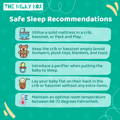
Is It Safe To Let Your Baby Sleep In Your Arms?
Fortunately, letting your baby sleep in your arms is entirely safe; there are no known risks involved in this practice as long as you are awake and alert. However, it is essential to remember that they must be on their back, and their airways should be clear and unblocked.
Sudden Infant Death Syndrome (SIDS)
Parents should know that fatigue can increase the risk of falling asleep anytime. This can be particularly risky for parents who fall asleep while holding their babies in rocking chairs or sofas. Accidents can happen in an instant, so it is not recommended to sleep in these arrangements, as it has been linked to Sudden Infant Death Syndrome (SIDS), which is a severe concern for parents.
Co-Sleeping
The American Academy of Pediatrics has recently updated its recommendations for safe infant sleep in 2022. It emphasizes that infants should sleep on their backs on flat, non-inclined surfaces without soft bedding and details bed-sharing risks under different scenarios.
Parents are encouraged to share a room with their infants during their first couple of years, which can help with monitoring. However, the baby should have their own safe sleeping space.
One of the biggest challenges for tired parents is being unable to take a break and sleep, especially when the baby falls asleep in their arms all night. Dozing in and out of sleep is not the same as being cozy and warm in bed. Parents and caretakers also need help in performing daily tasks during the day.
Some parents solve this issue by carrying their baby, but it's best if the baby can transition to their crib after a few weeks of being born.
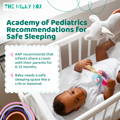
What Are The Pros Of Letting A Baby Sleep Only When Held?
One of the significant advantages of allowing your baby to sleep while being held is the comfort and feeling of security it provides. This sense of ease gives them a more peaceful and restful sleep. Moreover, cradling your little one as they sleep can create a precious bonding moment for both of you.
However, part of their baby steps into independence is learning to self-soothe and sleep alone. We’ve got you covered if you want to transition into this stage.
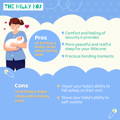
When Babies Can Self Soothe?
A good rule of thumb is that babies usually start self-soothing at around 12 weeks. Babies who can self-soothe tend to sleep longer and calm down more quickly when they wake up suddenly. This is a normal developmental milestone as babies grow older. Just like adults learn to fall asleep independently, babies learn this skill early in life.
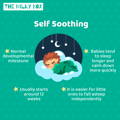
Tips for Getting Baby to Sleep Without Being Held
If your baby is having difficulty falling asleep without being held, try out some of the following techniques. These methods can help your baby adjust to a more sustainable and healthy sleep routine, essential for their development and growth.
By incorporating these techniques into your baby's sleep routine, you can help them learn to self-soothe and fall asleep without needing to be held.
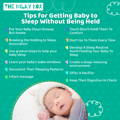
What To Expect When Sleep Training Your Child
In this case, sleep training refers to creating healthy sleep hygiene habits, such as developing a routine appropriate for your baby’s age. It is a big moment for parents and children, so expectations must be set before starting.
A lot of patience will be needed, especially during the first nights. Tears may be part of the bedtime routine for some time, especially for infants new to sleeping in a crib. This is normal. Some parents swear by the “cry it out” method, where the children are left to cry until their self-soothing instincts kick in.
After a few days, the baby will get used to their brand new bed, and they will learn to associate comfort with that surface. In no time, you will notice them falling asleep fast. Here are our best tips to help that transition happen smoothly.
Put Them Down Drowsy but Awake
Once they start self-soothing, it becomes easier for them to fall asleep independently. An excellent technique to help them ease into it is to place them in their crib when drowsy but not fully asleep. They’ll start associating their crib with rest time. Along with the right conditions in the room (lighting, temperature), this will wean them off sleeping in your arms for good.
Breaking the Holding to Sleep Association
Breaking this association is one of the very first steps to take. This process varies from one family to another, many parents rely on setting a specific routine: bath time, one last feeding, and then crib time. Adapting the room temperature and turning off the lights works wonders, as it helps the baby wind down.
Other babies must be exposed to the crib a few times while awake. This works wonders if you stay in the room, as they start to associate it with feeling safe. Breaking the most common associations, such as rocking them before every nap, is crucial to this process, too: Slowly decrease the rocking motion until you're just using one lullaby to comfort your baby, without putting them to sleep, before placing them in the crib while they're still awake.
Keeping them awake during feedings and following them with play or stimulation time is also helpful, as they stop associating feeding times with immediate nap time. You must be patient during this process, particularly with younger babies, as their instinct to seek safety will kick in. After the 12-week mark, babies are much more receptive to change.
Use Gradual Steps to Help Your Baby Sleep
Babies are often used to spending long periods in their mother’s arms, particularly after feedings and during naptimes. An excellent way to get them used to crib time is to slowly decrease the time you spend rocking them at night. You can start small, in ten-minute increments, until they are ready to be put down at a particular time without needing to be drowsy.
Document Their Sleeping Patterns
When it comes to sleeping patterns, each baby is different. This can be discouraging for some second-time parents. While their first baby could have been wonderful with sleeping more hours at night, their second baby can be more of a daytime sleeper. Their patterns will also change and adapt as the months go by.
It’s helpful for many to keep a small journal or a note on their phone documenting at what times their baby naps and for how long, this will eventually help you get a sense of their patterns.
Learn Your Baby's Wake Windows
A good way to keep track of their sleep patterns is to jot down their wake windows. These happen when they’re bubbly and ready to play. This is a great way for many parents to learn when not to put their baby down, as this would only cause fuzziness and crying.
Infant massage
A soft, gentle massage while they are in their crib can work wonders. Start by talking to them soothingly to help them be more in tune with your presence. Then, glide your fingers along the bridge of the nose, past their cheek, and create small circles around the jaw and behind the ears.
Conclude by gently rubbing the earlobes and the area under the chin. These feather-like touches are perfect for soothing them right into their dreamland.
It is essential to avoid using any oils or lotions on their faces, particularly heavily scented ones, as these can cause skin allergies in their sensitive skin. After their first month of life, you can use fragrance-free, hypoallergenic lotion on their body to keep their soft skin moisturized.

Touch (Don't Hold) Them To Comfort
As a parent, our first instinct when hearing our baby crying is to run and hold them close. However, this isn’t the best idea when you’re trying to associate their crib with sleep time. Slowly but surely, your baby will learn that a way to stay in your arms is through tantrums.
Instead, you can soothe them by gently touching their chest or belly or gently caressing their cheeks. This will instantly help them recognize your touch and scent without holding them. It’s comforting for them and also highly reassuring for parents.
You get to watch your baby while remaining firm about sleeping arrangements.
Don't Go To Them Every Time
Our human instincts are programmed to alert us whenever a child cries. In a 2023 study, researchers found that nearly all the subjects believed that their child's crying was in some way their fault. This can be emotionally exhausting for parents and even strain their relationship.
However, as discussed above, this can become counter-intuitive if you run to your baby every time they cry. If an infant’s needs are covered, most of the time, when they wake up during the night, they only need a few minutes to fall back asleep. It is recommended to wait a few minutes if you hear them crying before trying to soothe them, mainly if they haven’t learned to self-soothe.
Develop A Sleep Routine
Once you observe and learn about your baby’s sleeping patterns through observation, it will get easier to know when to start getting them ready for bed. There are specific activities that, due to their relaxing nature, are great when preparing your baby for bed. Here are some of our favorites:
● Reading them a story
● Playing white noise in the background
● Dimming the lights
● Giving them a gentle massage
● Bathing them with warm water before bedtime.
This is also a great way to implement routines early on, as it will help them love having regular habits. Eventually, a sleep routine can be translated into a “getting ready” routine every morning once they get to that stage.
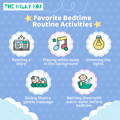
Avoid Feeding Your Baby To Sleep
Infants tend to fall asleep right after breastfeeding or bottle feeding. We, as adults, tend to get sleepy after a warm, comforting meal too. This is natural, and it’s a part of digesting a heavy meal.
However, if you’re looking to train your baby to sleep on their crib, a good idea is to start your night routine with a bath, followed by a feeding. Don’t make their nightly feeding the last activity before putting them to sleep, as this will only strengthen their association between being held and bedtime.
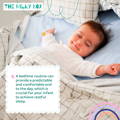
Create a Sleep-Inducing Environment
Like us, babies need a comfortable environment to fall asleep quickly.
Keeping the room mostly dark and playing white noise or soft music can help them sleep. White noise is excellent for blocking out noise from drawers opening, footsteps down the hall, doors creaking, and more. These noises usually startle infants when getting their sleep in, so many parents swear by getting a white noise machine to help their baby stay asleep.
Temperature is a significant factor, too. If the room is too warm, it will irritate them, especially if they wear multiple layers of clothes. During the first few months of life, blankets are a safety hazard for babies, as they can struggle with getting tangled or suffocated from them. It is recommended to refrain from bundling them up in the crib.
A fitted sheet is enough if the room is between 68 and 72 degrees Fahrenheit (20-22 Celsius).
Blankets can be introduced as they age and gain motor skills, but as a rule of thumb, they need to be at least a year old to get comfy beneath a blanket on their own.
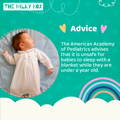
Offer A Pacifier
Pacifiers can be great to help a baby self-soothe when required. The repeated sucking motion can be calming for their nervous system.
According to the American Board of Pediatrics, their use is protective against sudden infant death syndrome (SIDS), but a pacifier should not be forced on resistant infants. They encourage parents to make an informed decision regarding the usage of pacifiers.
Keep Their Digestion In Check
In most cases, the cause of infant fussiness is diet-related. It’s essential to keep their eating habits in check and keep an eye out for:
● Abdominal distension
● Failure to gain weight
● Constant diarrhea
● Changes in stool color or texture
● Pain to the touch
If you notice these signs, your baby might have special dietary needs, or they can find any ingredients in their formula hard to digest. Generally, when this happens, your baby must see a qualified medical provider for a proper evaluation. Still, as a good rule of thumb, organic formula with high-quality ingredients always suits them well.
Reflux, Silent Reflux, and How It Can Impact Your Baby’s Sleep
Reflux is a common concern for parents and can significantly impact their baby's sleep. When lying down, the discomfort caused by reflux often becomes more apparent.
Silent reflux can be tricky to detect because it doesn't involve spitting up. It occurs when food travels back up the food pipe and is swallowed instead of being expelled, making it harder to identify.
Infant Reflux Relief
You can feed your baby upright and burp them before bed to prevent milk from returning. Giving your baby smaller and more frequent meals that are easy to digest if they have reflux is recommended. If your baby still experiences difficulty in digesting food, you can consider switching to a formula containing ingredients specifically for reflux.
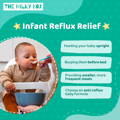
It's important to note that constant reflux should not persist past 12 months of age. If your baby is over that age and continues to experience difficulty feeding, regularly brings milk back up, or seems uncomfortable after eating, it's essential to speak with a qualified healthcare provider. They may need special tests to diagnose any underlying gastrointestinal issues.
Baby Formula for Acid Reflux
HiPP Anti-Reflux baby formula is a carefully crafted solution to help babies with acid reflux. It is made with all-natural, organic ingredients that are gentle on your baby's delicate system. This formula is designed to soothe and comfort your little one, who may be experiencing discomfort and irritability due to acid reflux.
One of the critical ingredients in HiPP AR is locust bean gum, which makes the formula creamier and more accessible for your baby to digest. This natural bulking agent is extracted from the seeds of the carob tree and has an impressive water-binding capacity. It can hold up to 80-100% of its weight in water, making it an effective thickener for babies who frequently spit up.
The thickener in HiPP AR works in harmony with probiotics and prebiotics to support your baby's digestive needs. These beneficial bacteria help to keep your baby's gut healthy, reducing the likelihood of colic and other digestive issues.
Moreover, the HiPP Anti-reflux formula also contains essential vitamins and minerals for your baby's growth and development. These nutrients are carefully balanced to ensure optimal absorption and strengthen your baby's immune system.
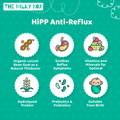
In Conclusion
Getting your baby used to their crib can be difficult for both the baby and the parent, and it is essential to remember that this process will take time. It requires a lot of patience, but once your baby makes the connection between their crib and time to sleep, you will find life will get easier as they grow.
As caretakers, It’s important to support each other during this challenging process, but one thing is guaranteed: you will come out of this experience feeling more in tune with your baby’s needs.
As always, The Milky Box is here to walk hand in hand with you during this beautiful process.
Frequently Asked Questions
How can I help my baby sleep in their bassinet?
Is it dangerous to place my baby on their belly during nap time?
Yes. The American Association of Pediatrics recommends back sleeping as the best practice to avoid suffocation, choking, and sudden infant death syndrome (SIDS). Place your baby on their back in the crib for sleep. Once a baby starts to roll, it’s usually fine for them to remain sleeping on their stomachs if they roll themselves that way.
How long will it take my baby to sleep in their crib without crying?
The time it takes them to get used to sleeping on their cribs will vary depending on their ages, their current habits, their environment, and the age they start sleeping on their crib. It usually takes a little longer for a baby who is used to sleeping exclusively while being held, but there is no set amount of time for them to make this transition.
How much time can I leave my baby in the crib without sleeping?
The duration for allowing your baby to self-soothe varies based on age, prior sleep training, mood, and comfort level. With newborns and young infants, you might feel at ease giving them 15 to 20 minutes in the crib to practice before assisting them in falling asleep. If your baby is 6 months or older, consider allowing them 30 to 45 minutes to work on falling asleep independently before taking a break and attempting the process again.
Disclaimer:
Please be aware that this information is based on general trends in babies, and it is not medical advice. Your doctor should be your first source of information and advice when considering any changes to your child’s formula and when choosing your child’s formula. Always consult your pediatrician before making any decisions about your child’s diet or if you notice any changes in your child.
Breastfeeding is the best nutrition for your baby because breast milk provides your child with all the essential nutrients they need for growth and development. Please consult your pediatrician if your child requires supplemental feeding.

Dr. Maria Cerino is a medical doctor and a researcher from Mexico, her works being published in prestigious journals like the American Journal of Human Biology among others. As a medical writer, Dr. Cerino focuses on infant nutrition and healthy neurological development in infants and children. In her free time, she enjoys going on walks, watching indie films, and cooking at home.
Read Next:
Reviewed by Suzanne Renee',
Infant Nutrition Expert

Suzanne Renee' is an accomplished professional with extensive expertise in the area of infant nutrition, dedicated to promoting the health and wellbeing of children. She started this journey as a foster parent.
Suzanne has emerged as a strong proponent of the European baby formula and has become a full-time writer on the subject.
In her free time, she enjoys camping, hiking, and going to church.

